My second Year running the Flying Club has been a Year of challenges
. There is a lot of unfinished busines going on
with the Club that cannot be done on one-year bases.
But I have also been flying a lot with my own
Cessna. As a start I decided to tell You about overhauling an
engine.
In October 15'th last year I was flying around in Lappland and
I just coudn't help noticing that my Roll-Royce/Continental
O-300D engine was giving more noices and vibrations than it used to
be. It was still running smoother than Lycoming
but not "silk-smooth" as it used to be . Maybe that was
normal for an engine that has been running 2558 hours SMOH ,
however it still troubled me . I retired last year and for the
first time in my life I had plenty of spare time for the January
2007 . So I decided to ask quotations for an engine overhaul .
I requested Quotations by e-mail from TMC-Continental Factory
New York (www.tmclink.com),
ScanAviation (www.scanaviation.dk)
in Danemark and AirServiceVamrup (www.airservice.dk)
in Danemark.
The Engine Rebuid quotation from the Factory was by far the
most expensive one as you could expect. I studied a couple of
NTSB-reports where a newly rebuild engine had failed . I felt
uncomfortable with those reports and consulted my mechanic
about them . He also felt , that the rebuilding-process gives only
minor extra value for the engine overhaul considering the really
high expences.
ScanAviation gave me a quotation that was slightly more
expensive than the quotation I received from AirServiceVamdrup.
When comparing the quotations I found out that they were
approximately similar and done by the Overhaul Manual according to the
regulations . When I pointed out to ScanAviation by e-mail
that I had received a more affordable quotation from their
competitor , they answered that "they are the best and will
never be the cheapest". Well - Our Flying Club had
a Lycoming
engine overhauled there and we are very satisfied with it. But
Howcome - I have visited ScanAviations Website last year and
this year - always with the result that their website's
Product-page is "under construction". In my opinion they
are too busy if they
have no time to update their website .
AirServiceVamdrup has a website that is top-class : I found out
everything I needed to know and received a quotation in a very
short notice. The Quotation had been edited carefully and the
quarantee for the work was as good as with the others.
My impressions about ASV were positive and I was sure my engine will
be overhauled professionally and with high quality
there . My Mechanic agreed with me - so ASV it was going to be
.
I have had no regrets about my choice . When I delivered the Engine
to Vamdrup I found out that the people were nice and friendly and
the place was exactly as I had imagined it by reading their
website . They promised to e-mail me pictures about the progress
of the overhaul
and that really has happened.
I shall include a photo story about the overhaul :
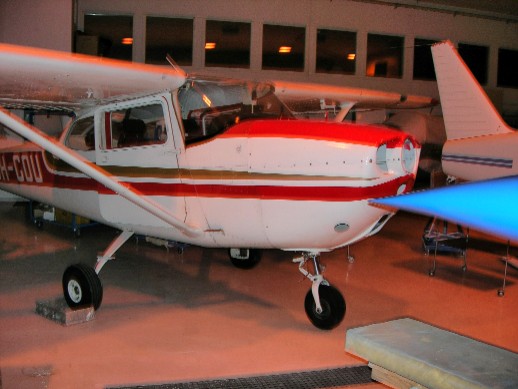
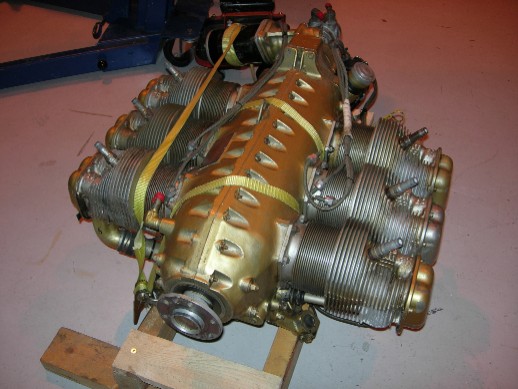
Sampo Kukkola from ArcticAirService in Ranua
removed the engine and packed it into the trunk of my car for delivery
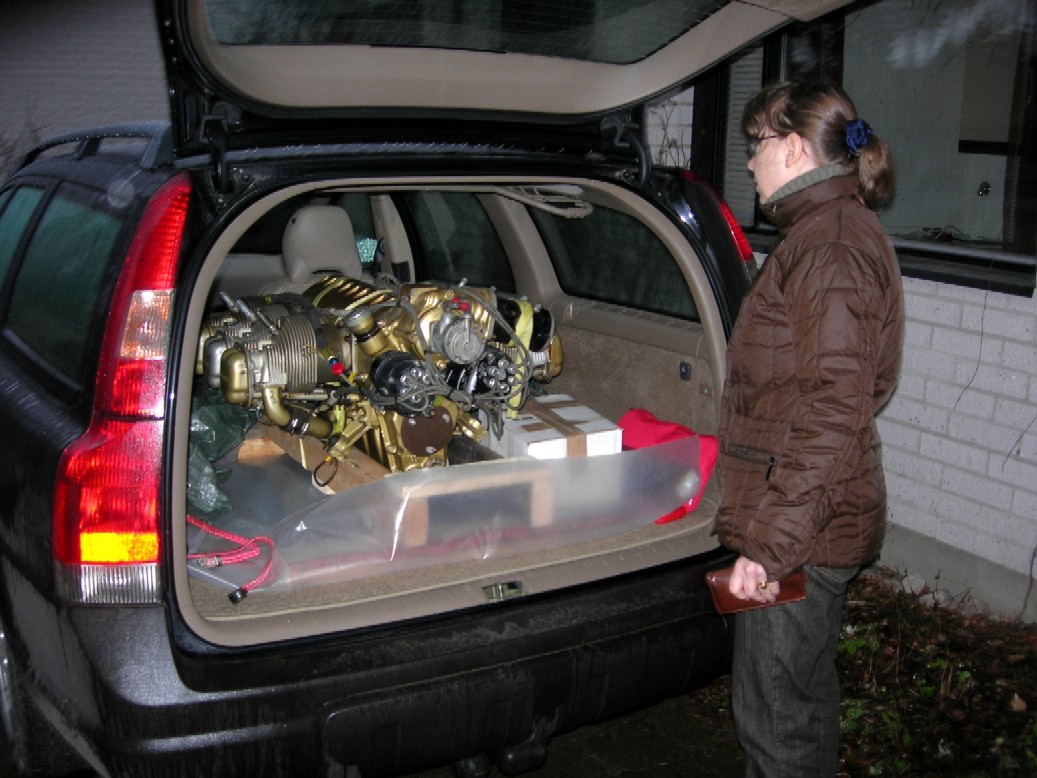
Me and my wife admiring the engine
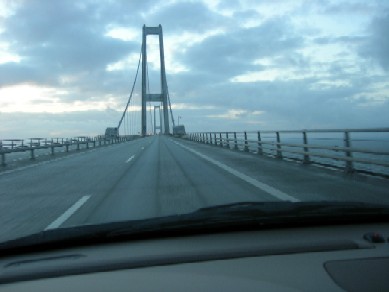
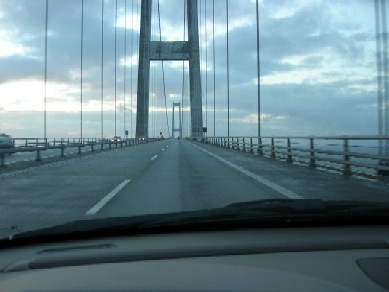
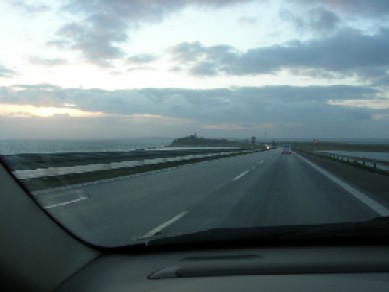
The Bridge of the Big-Belt along the way to Vamdrup
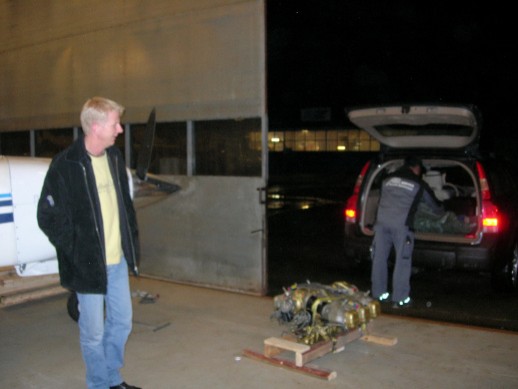
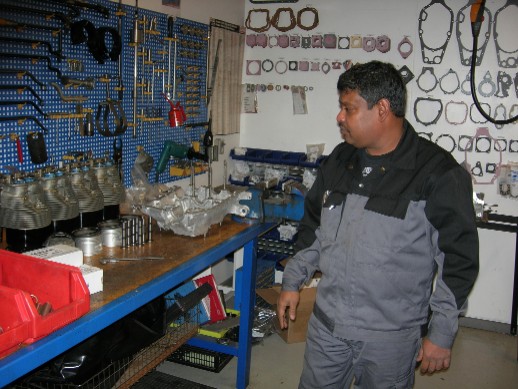
Unloading the engine in Vamdrup . To the left
Shop manager Torben Jensen. To the right engine specialist
Vasudavan Iyer Balasubramaniam - better known as "Vasu"
is preparing
for the work
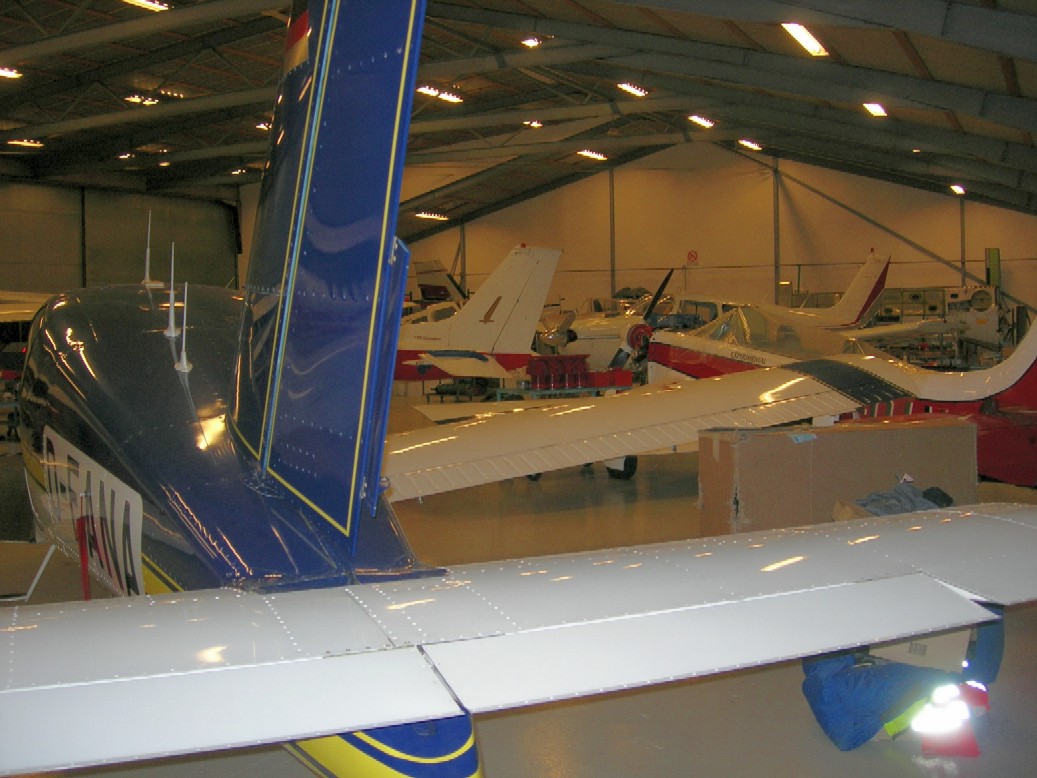
One of the Hangars - take a notice to the
cleanliness and to the highly polished planes
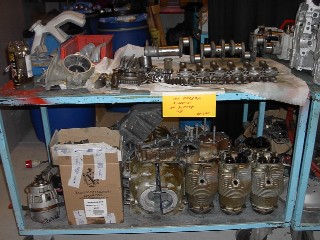
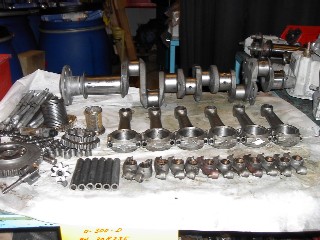 The engine parts removed
The engine parts removed
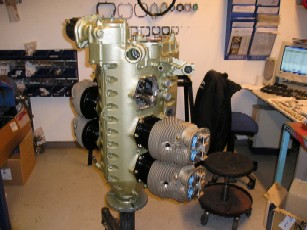
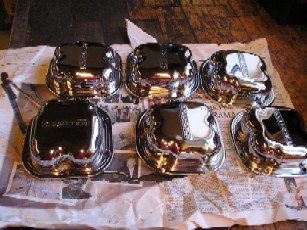
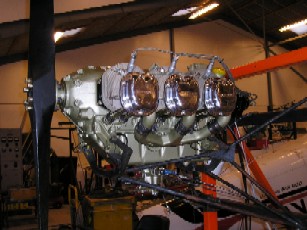
Pictures taken during the overhaul process
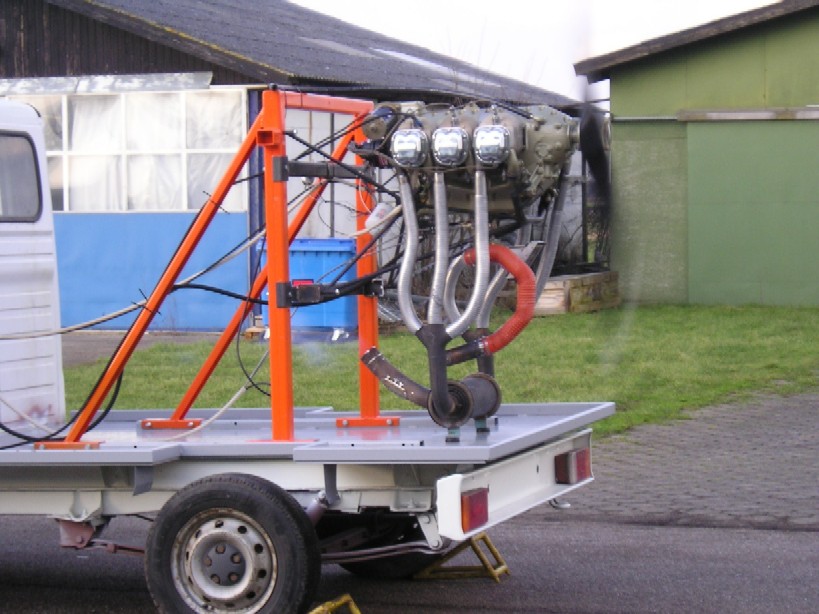
The Engine having its first test run 090207 - and
running perfectly
I left my Home for Engine pickup 190207 via Viking-line from Turku to
Stockholm . I stayed overnight at Vamdrup Hotell ,
which was kindly booked for me by Mr. H.P.Hansen from
AirServiceVamdrup. This time I was in no hurry so I could
take some photos around the Airfield:
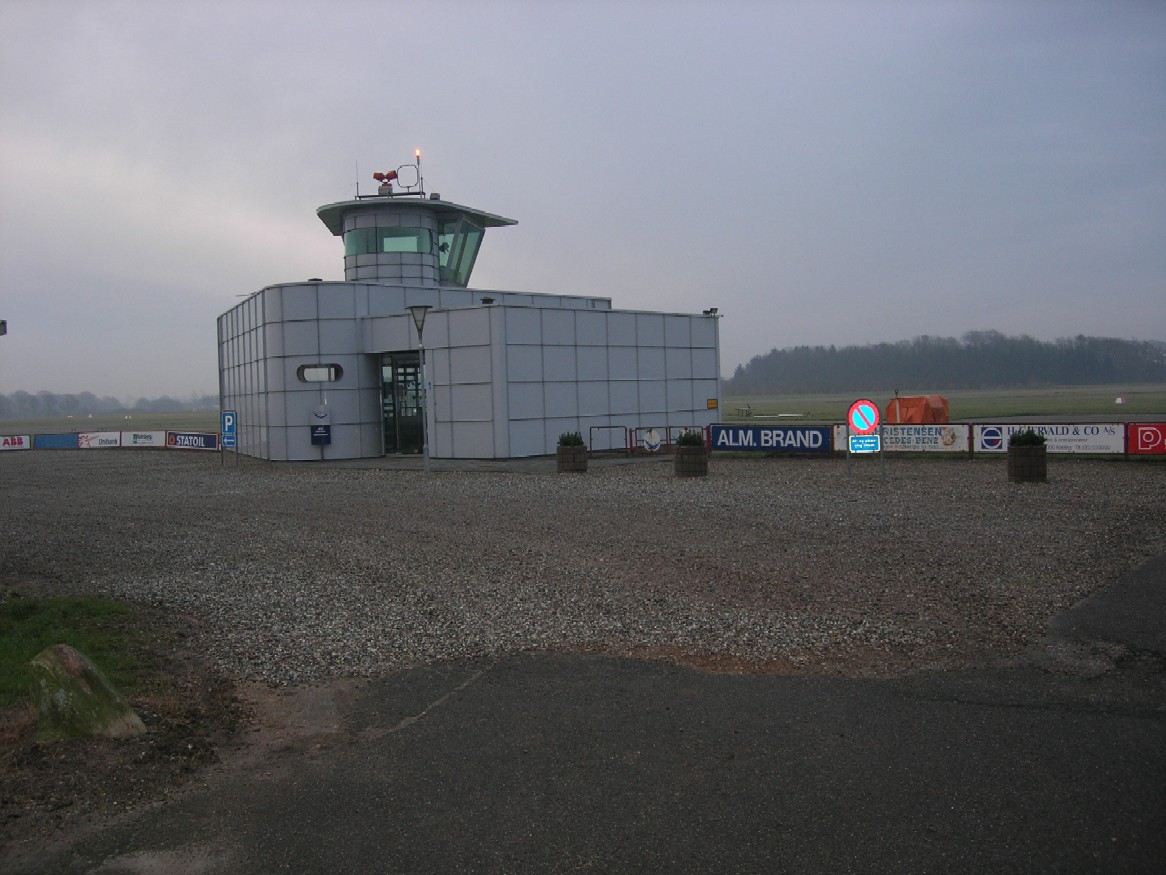
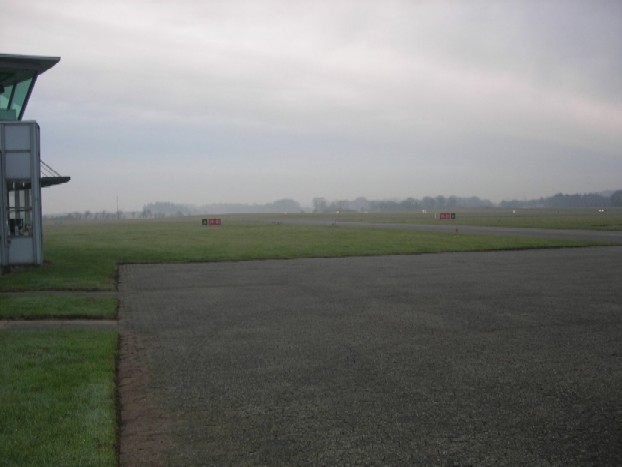
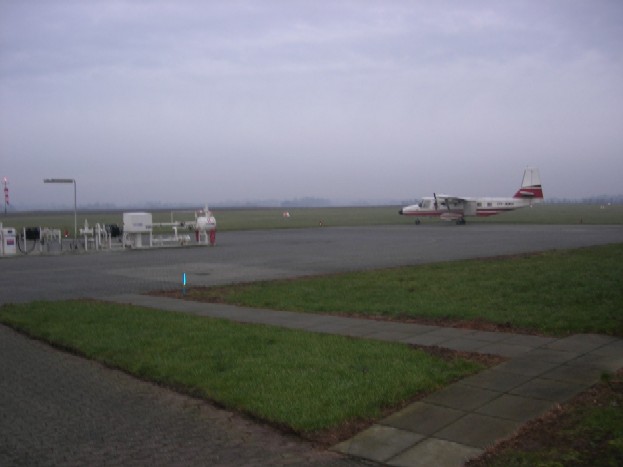
In one of the Hangars the Engine was already packed for delivery . We
gathered together for a coffee break and discussed about general
aviation among
else ( there was a big snowstorm approaching Danemark).
"Vasu" gave me instructions for the becoming Engine Break-in
period .
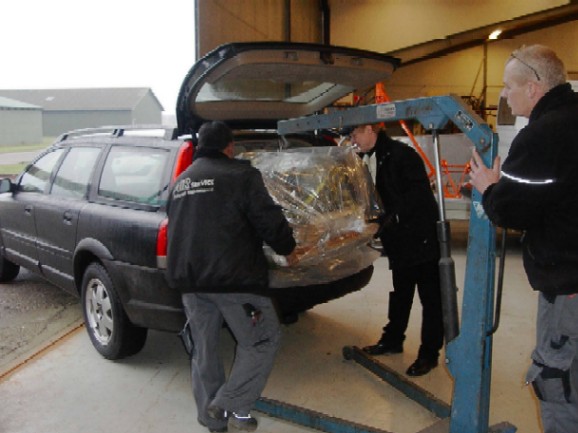
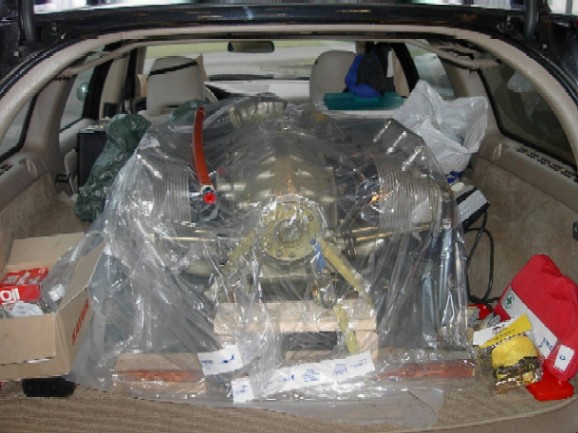
Lifting the engine into my car. From left
Vasu , Me and Mr. Niels Jensen

Vasu transferring the responsibility of the Engine
management to me
I drove then via Sweden to the ArcticAirService - Ranua in
Northern Finland , where I left the Engine to be installed back to the
Plane.
Next Target was my summer Cottage up there in Lappland . The
weather was very fresh when I arrived in the evening 21'th of February.
Temperature was minus 21 degrees and going down. I was lucky to
have plenty of firewood in store for warming up the Cabin . It
slowly
became warmer and warmer inside . However , outside temperature was
minus 28 degrees at night .
Sampo had the Engine installed as we planned 150307.
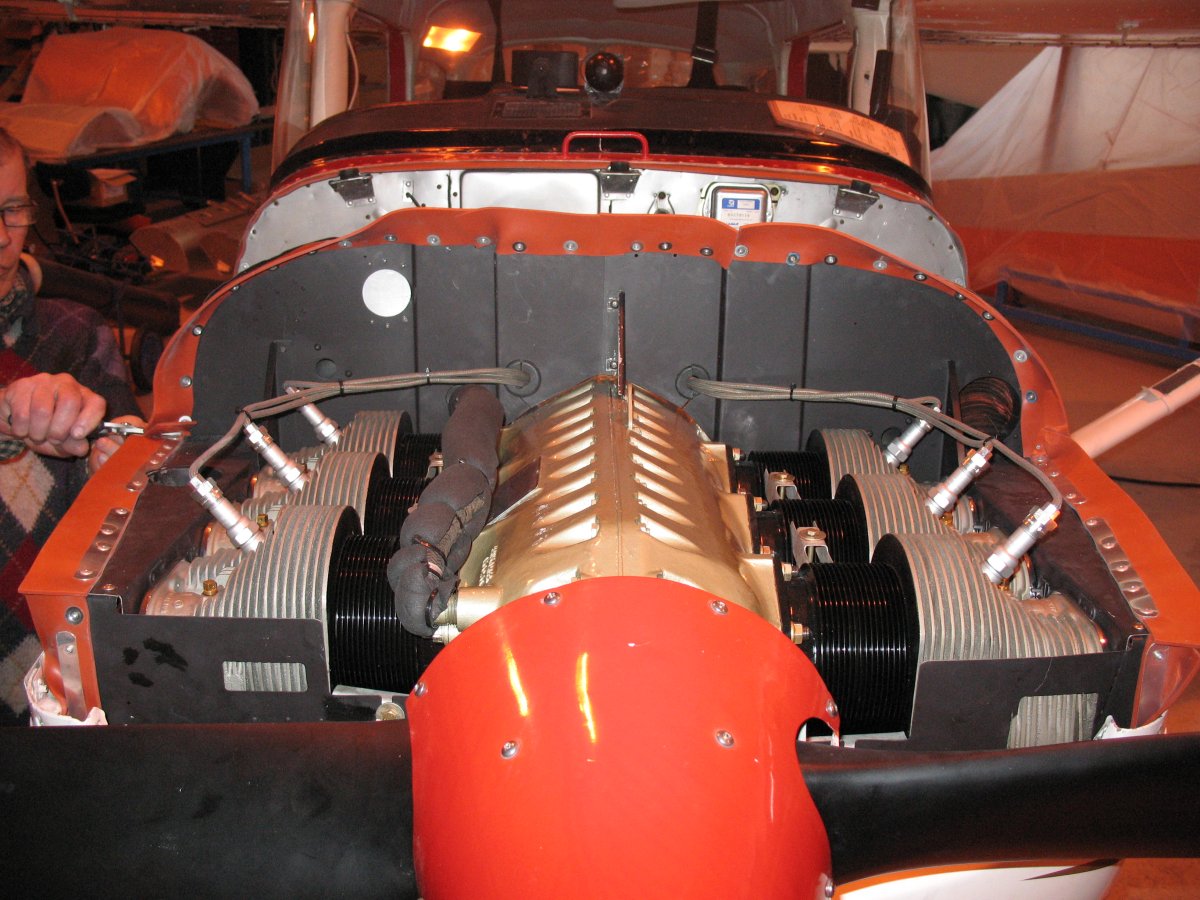
Me and my Wife arrived to ranua according to the plan during
afternoon 150307 and I sent my wife upstears to Customers lounge
to read books meanwhile
I would take a Test Flight. But as You could guess these big Projects
do not always go as we planned them: Sampo had started the engine
for testing earlier
and found out that it won't idle. So it wasn't ready for test-flight
after all. I called to Vamdrup to Mr. H.P. with my mobile and he handed
the call on to Vasu.
Sampo wasn't very keen on doing anything to the Carburetor because we
might lose the quarantee. Vasu convinced us that we could remove the
carburetor
and clean it. Sampo did as adviced:
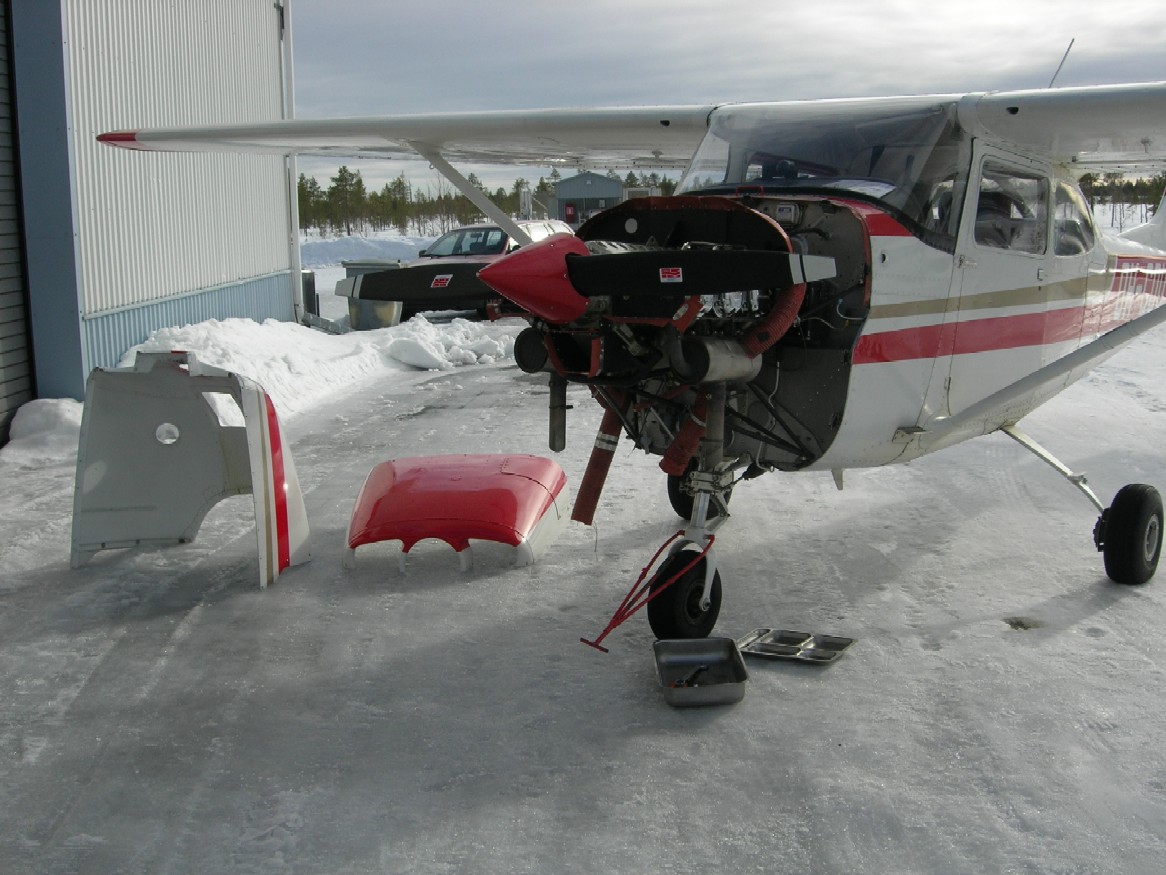
Carburetor removed
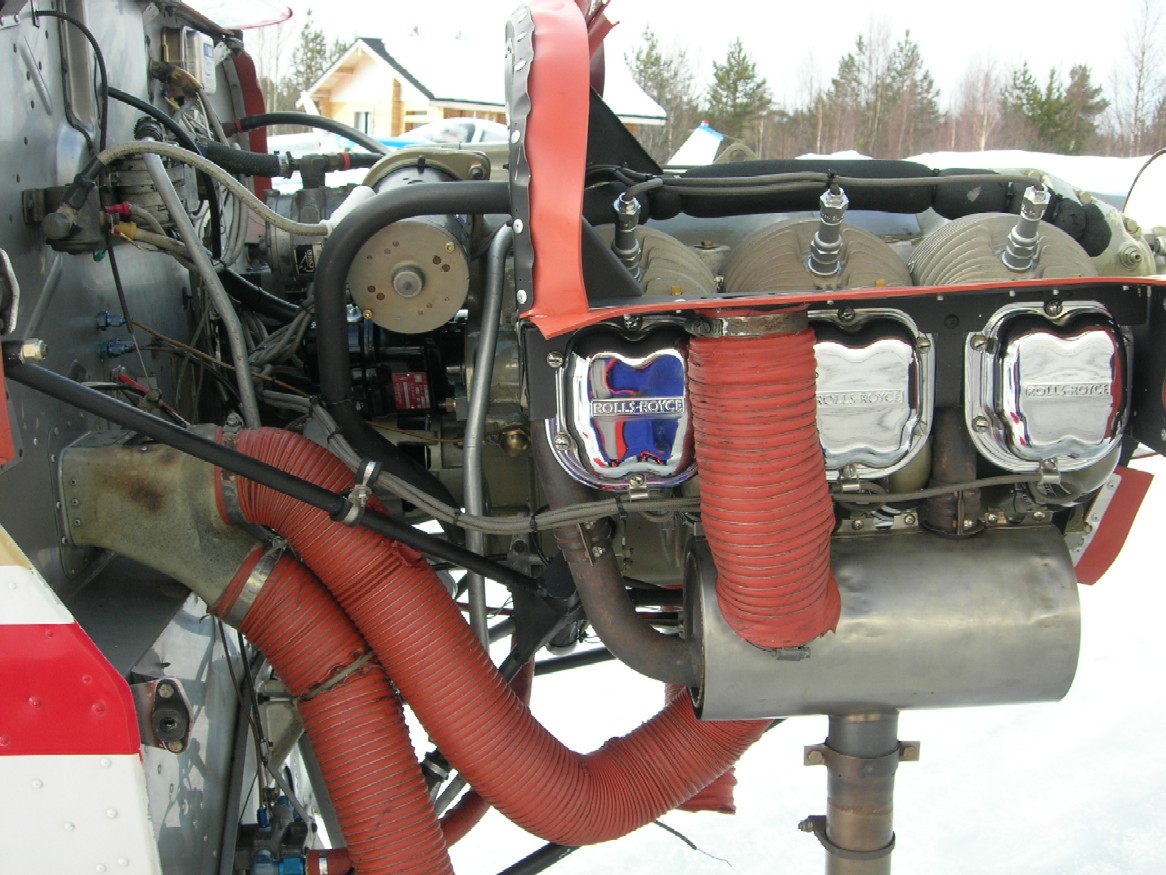
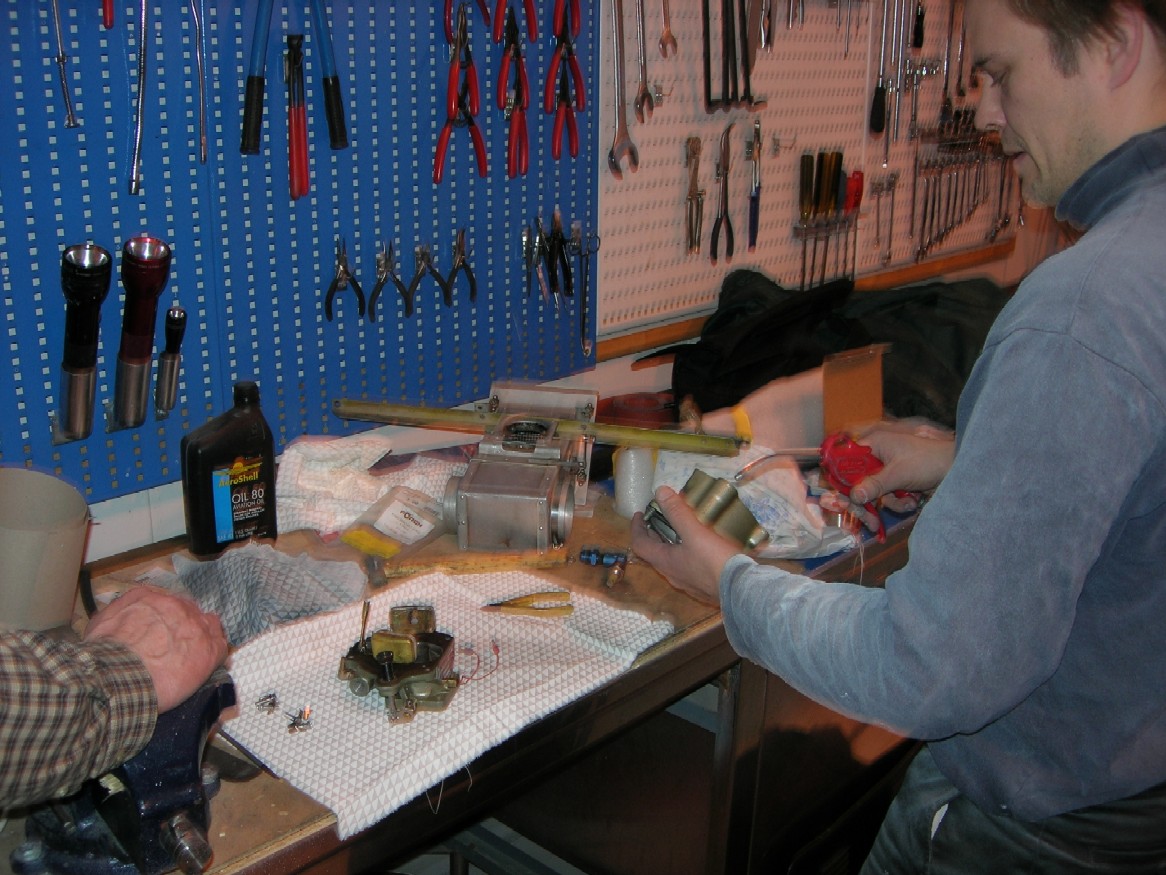
Sampo cleaning the Carburetor
After installing the Carburetor back the engine
behaved as perfectly as it had been behaving in Vamdrup. Maybe there
were some small inpurities in the
carburetor left from the overhaul-process in the USA
and they flowed to the smallest duct in the Carburetor: the duct that
regulates idling. Next day I called
to Vamdrup and heard that they were so worried about
the situation that they had ordered another overhauled
carburetor from USA in case we can't get
this one fixed. So there it is now in storage
ready for another engine overhaul.
But let's get back to the Test-Flight: There was
an area of freezing rain approaching us from the North, so I had to be
very effective and fast to make the
prefight and one hour test-flight before the rain. I
managed to do that just barely: When I made turns on the north side of
the runway , my windshield got wet ,
but it always dried on the south side. But the actual
test flight was a huge success: I had altitude in use up to
1950 ft and I used average speed of 100 kt
at 70% power( 2450rpm). I made three touch and goes
during which the engine behaved perfectly. During acceleration on ground
at take-off it took
2450 rpm on full power and during taxi idling
was steady. The test Protocoll included notes about many affecting
values, for instance oil pressure was a
steady 60 psi during the test-flight.
My impression from the test-flight was
that the engine was powerful and had a very beautifull sound and all the
annoying noices that harassed me
before were gone.
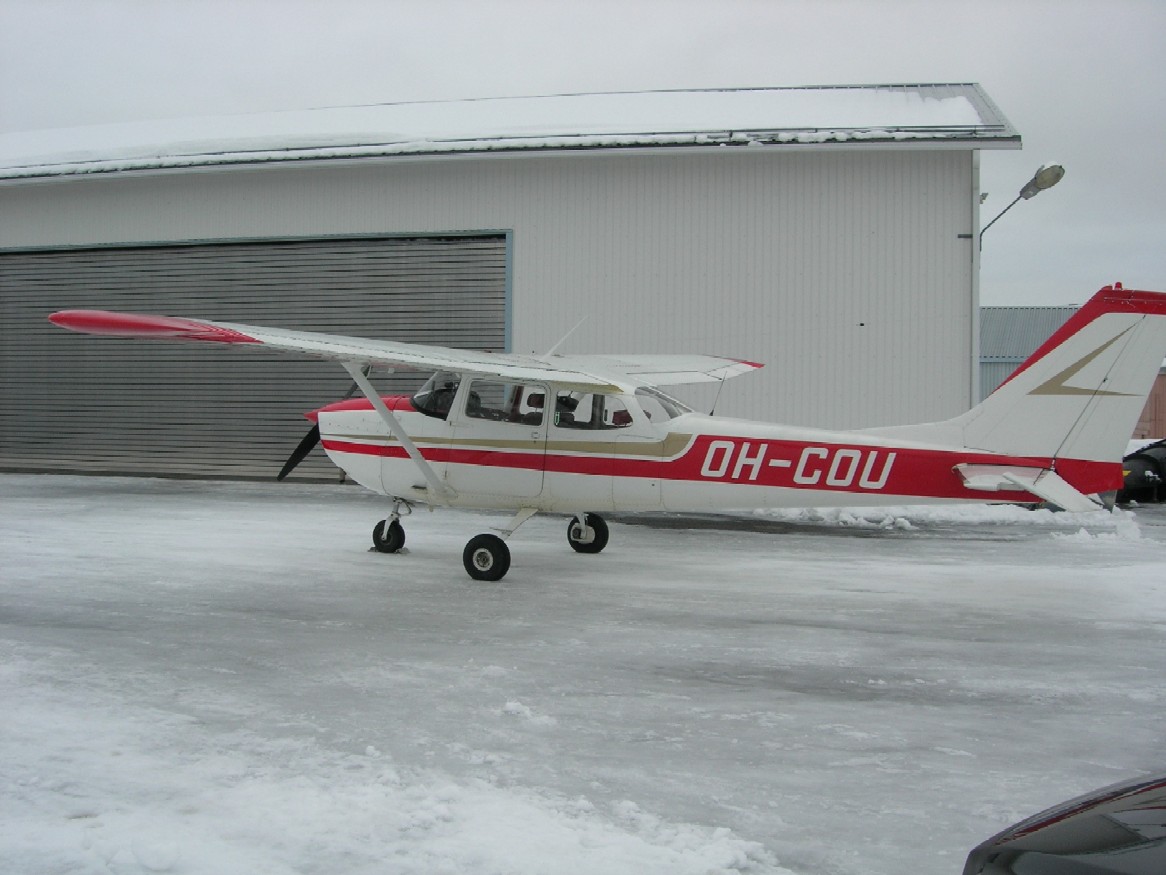
The Plane parked after the test flight just before
it began to rain
Couple of days later I was able to take a longer test
flight when the weather was better.
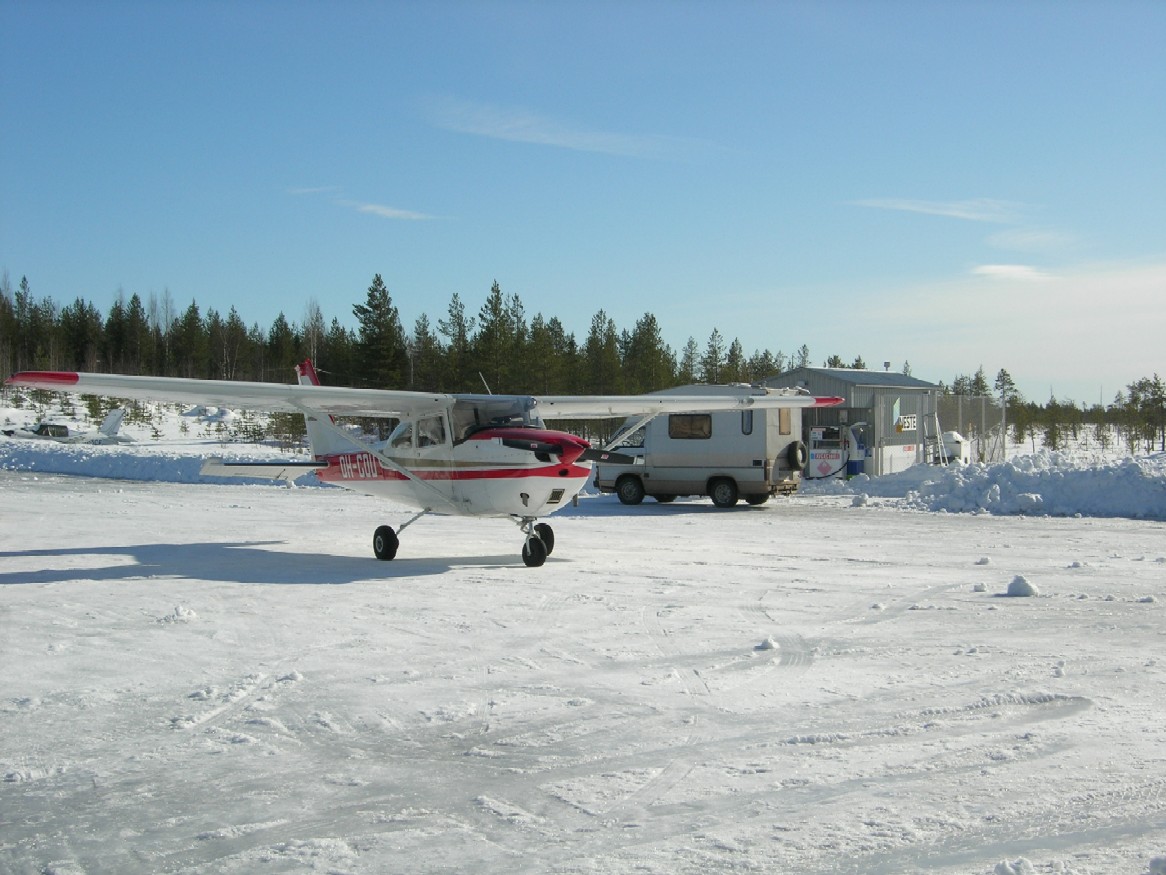
I made a lond distance flight to Pudasjärvi and back again and
flew around Ranua to make it a 1,5 hour flight. I had no
difficulties whatsoever. And the
engine sounded great all the time ( I must admit that I use active
LightSpeed Head Phones and the noice level is about the same as inside a
car). I decided
that the plane was ready for a longer flight back home to
south. Me and my wife left Ranua 230307 at noon when the weather was
excellent:
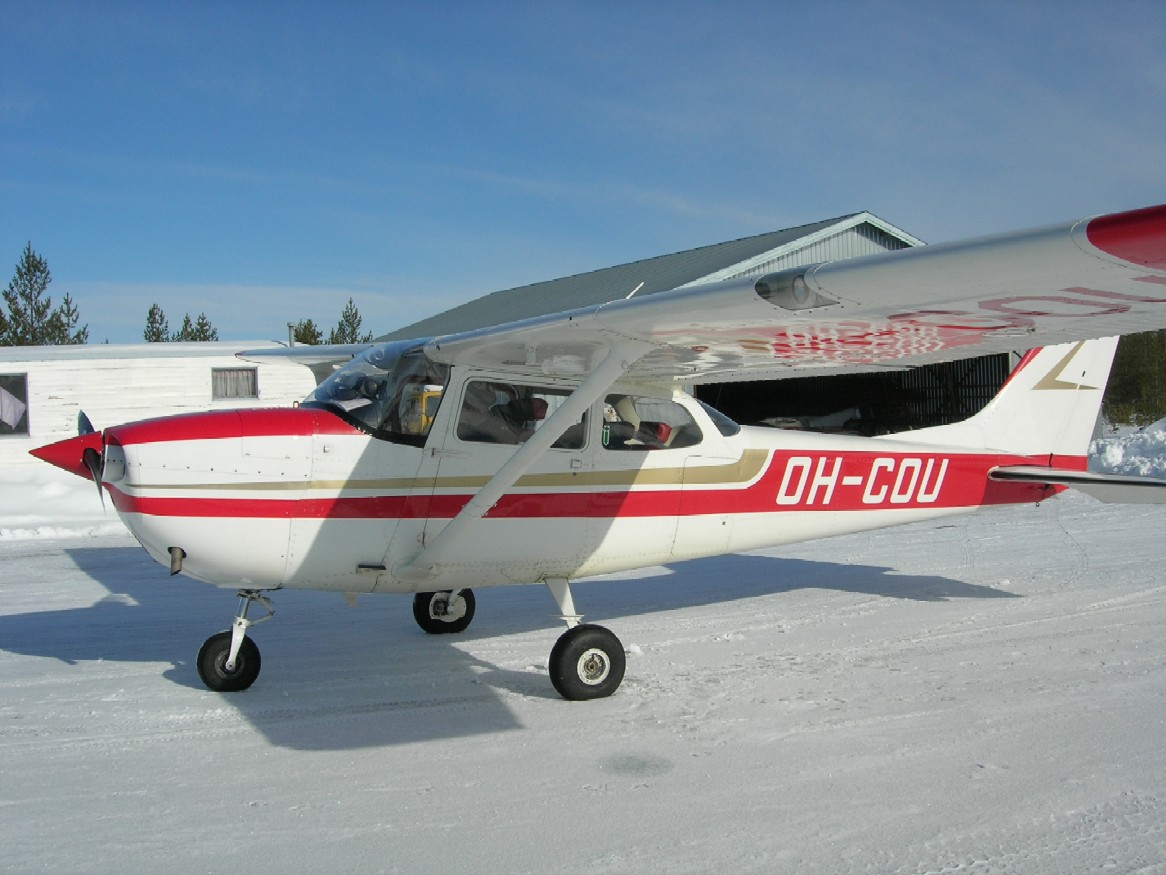
We flew at 4500 ft and had a very smooth ride
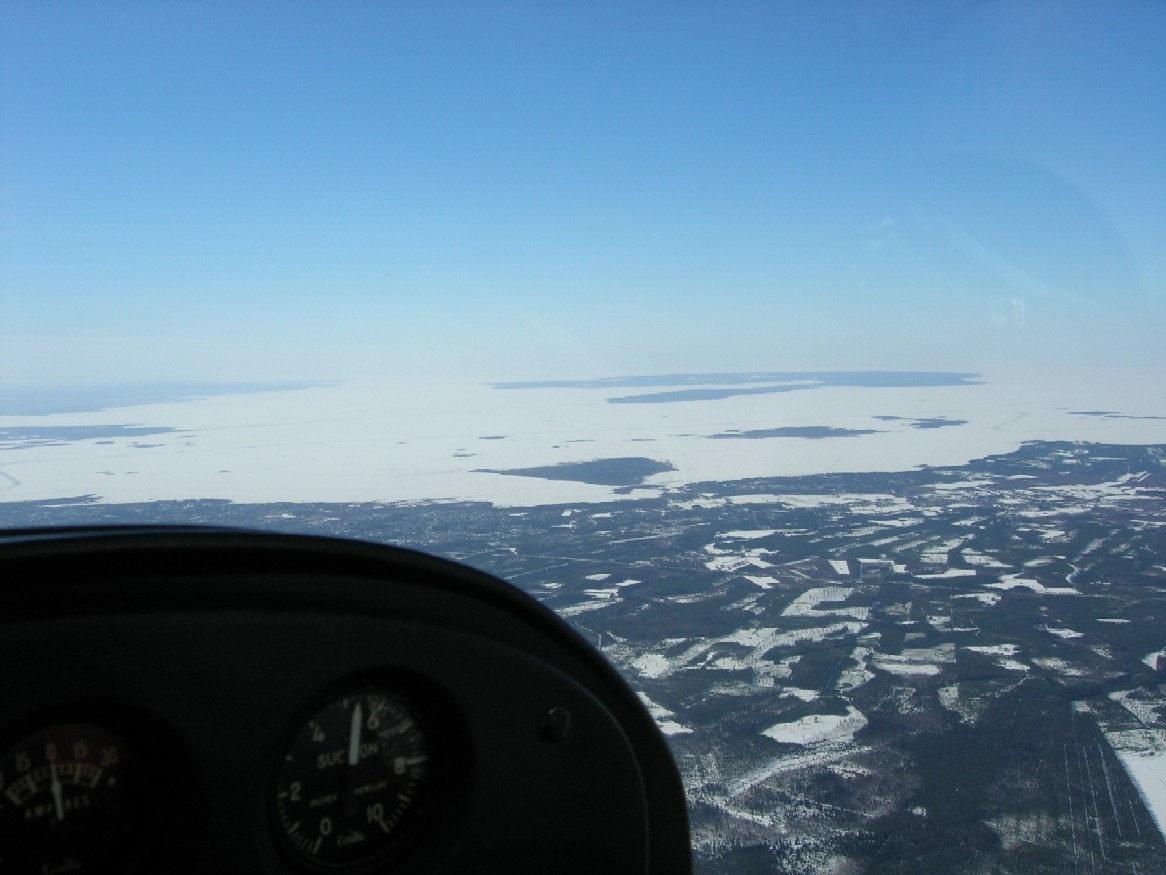
We flew over Oulu city at 4500 ft and you can see
Hailuoto island to the right .
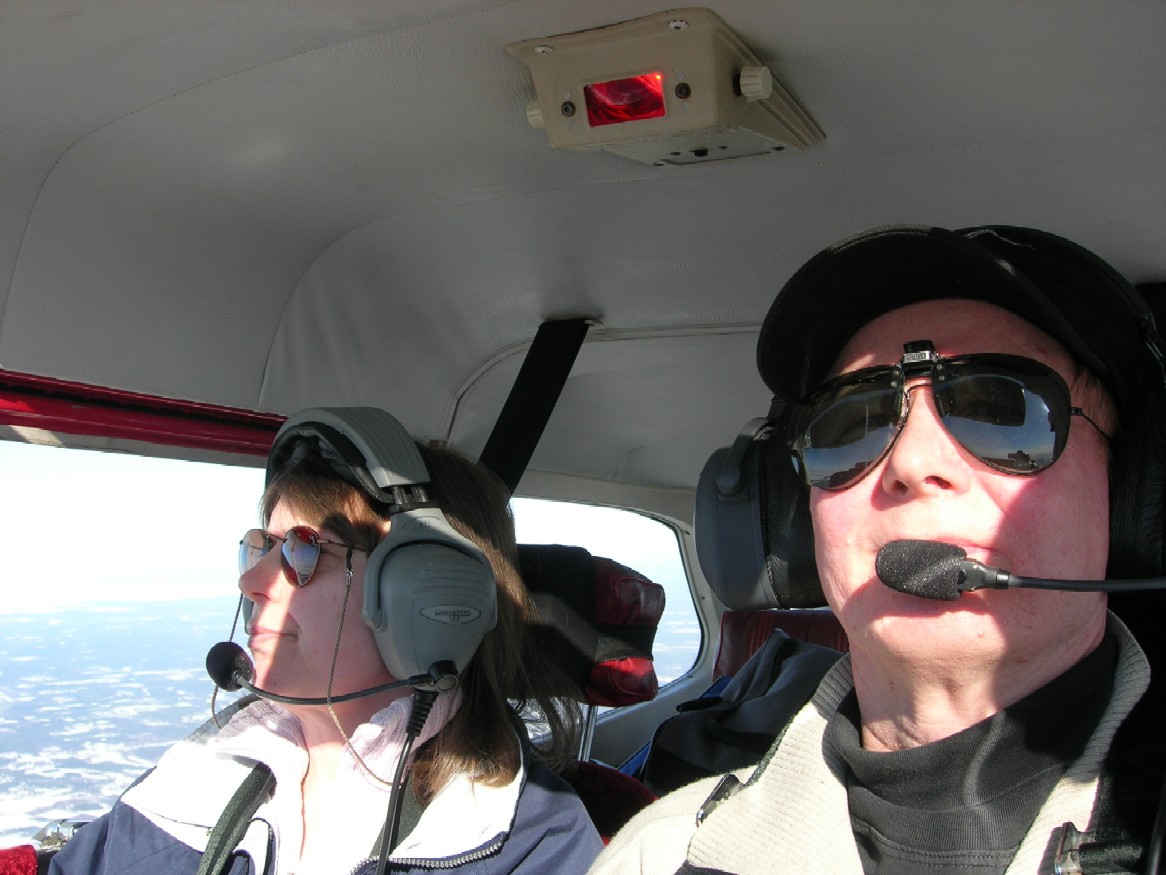
It took us about three hours back home but the visibility
decreased and the cloudbase lowered significantly during the last 20
minutes of
the ride. We had a very positive feeling though because the
Overhaul-process had succeeded very well . The engine
behaved just like a new engine should.
Next day I took a one hour flight over our home city Rauma and
found out that the oil consumption had lowered to a minimum - so the
break-in period was
on the better side.
23.05.07 Cessna was at the 25 hour Oil-change service in Ranua.
The old "straight Oil" that Sampo drained out was
considerably clean. The Oil consumption
before the Oil change was next to nothing. Referring to Cessnas
insructions for break-in Sampo and I decided that the Break-in was
done and it was time
to put multi-gear Oil in (15-50W). When I flew back to south that
evening I was very happy with the engine. Altitude changes upwards were
fast and the engine
was very willing to co-operate with me.
One thing that I found out during the break-n Period was that the 100
LL fuel is not the best choice for this engine. It has four times
the Lead-content that
this engine needs . I had to lean all the time except when using full
power. Allways before Magneto-testing I had had to lean for a moment
otherwise the left
Magneto would drop to the limits. The inside of the
Exhaust Pipes was dark grey. When I used Autofuel about 50% mixed with
100 LL before the overhaul
the Magnetos had a 25 rpm drop both steadily and the inside of
the exhaust Pipes were light grey. I am going to mix Autofuel
first about 25% and later about
50% to the 100 LL. The Lead content for the Valves will still
be twice the amount needed. In my opinion this is the way to avoid valve
sticking and besides
lower the expenses. I have the Pedersen Autofuel STC for the plane
and the Engine. ( In Finland Autofuel is 20-30 cents cheaper than 100LL/
litre and the
price of the 100LL is getting considerably higher in Europe next Year).
Tero

